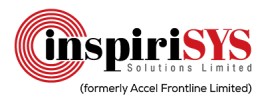i
WhiteBlue Cloud
Services
Filter interviews by
WhiteBlue Cloud Services Interview Questions and Answers
8 Interview questions
Versioning container images in an artifactory involves tagging images with version numbers.
Tag the container image with a version number before pushing it to the artifactory.
Use semantic versioning (e.g. 1.0.0) for clear version identification.
Maintain a consistent versioning scheme to track changes and updates.
Automate the versioning process using CI/CD pipelines for efficiency.
Ensure proper documentation of vers...
Key components of the Kubernetes control plane include API server, scheduler, controller manager, and etcd.
API server: serves the Kubernetes API and is the front-end for the control plane
Scheduler: responsible for assigning workloads to nodes based on resource availability
Controller manager: manages different controllers that regulate the state of the cluster
etcd: distributed key-value store that stores cluster st...
To deploy a load balancer to a Kubernetes Cluster, you can use a Kubernetes Service of type LoadBalancer.
Create a Kubernetes Service manifest with type LoadBalancer.
Specify the ports and target port for the service.
Apply the service manifest to the Kubernetes cluster.
The cloud provider will provision a load balancer and assign an external IP to it.
Clients can now access the application through the external IP of t...
Storage allocation and management on on-prem Kubernetes involves using persistent volumes and storage classes.
Persistent volumes (PVs) are created and managed separately from pods.
Storage classes define different types of storage and their properties.
PVs are dynamically provisioned based on storage class definitions.
Pods can request specific storage requirements using Persistent Volume Claims (PVCs).
Chart.yaml defines metadata about the chart, while values.yaml contains configurable values for the chart.
Chart.yaml contains metadata such as name, version, and description of the chart.
values.yaml contains configurable values that can be overridden during chart installation.
Chart.yaml is used for defining the structure of the chart, while values.yaml is used for customizing the chart.
Example: Chart.yaml may have...
Networking in a Kubernetes cluster is managed through various components like CNI plugins, Service objects, Ingress controllers, and Network Policies.
Use Container Network Interface (CNI) plugins to enable communication between pods in the cluster.
Utilize Service objects to expose pods internally or externally within the cluster.
Implement Ingress controllers to manage external access to services within the cluster...
Creating a Docker file involves defining the steps to build a Docker image.
Start with a base image using the 'FROM' keyword
Add any necessary dependencies or packages using 'RUN' commands
Set environment variables with 'ENV' command
Copy files or directories into the image using 'COPY' command
Expose ports with 'EXPOSE' command
Define the command to run when the container starts with 'CMD' or 'ENTRYPOINT' command
Scheduler, API Server, and Ingress Controller are key components in Kubernetes responsible for scheduling, managing API requests, and managing external access to services.
Scheduler: Component responsible for assigning workloads to nodes based on resource availability and constraints.
API Server: Component that serves as the front-end for Kubernetes, handling API requests, authentication, and validation.
Ingress Cont...
WhiteBlue Cloud Services Interview Experiences
4 interviews found
I applied via Approached by Company and was interviewed in Dec 2024. There was 1 interview round.
(9 Questions)
- Q1. What are the key components of the Kubernetes control plane?
- Ans.
Key components of the Kubernetes control plane include API server, scheduler, controller manager, and etcd.
API server: serves the Kubernetes API and is the front-end for the control plane
Scheduler: responsible for assigning workloads to nodes based on resource availability
Controller manager: manages different controllers that regulate the state of the cluster
etcd: distributed key-value store that stores cluster state a...
- Q2. How to create a Docker file? What are the contents of the Docker file?
- Ans.
Creating a Docker file involves defining the steps to build a Docker image.
Start with a base image using the 'FROM' keyword
Add any necessary dependencies or packages using 'RUN' commands
Set environment variables with 'ENV' command
Copy files or directories into the image using 'COPY' command
Expose ports with 'EXPOSE' command
Define the command to run when the container starts with 'CMD' or 'ENTRYPOINT' command
- Q3. How do you deploy a load balancer to your Kubernetes Cluster?
- Ans.
To deploy a load balancer to a Kubernetes Cluster, you can use a Kubernetes Service of type LoadBalancer.
Create a Kubernetes Service manifest with type LoadBalancer.
Specify the ports and target port for the service.
Apply the service manifest to the Kubernetes cluster.
The cloud provider will provision a load balancer and assign an external IP to it.
Clients can now access the application through the external IP of the lo...
- Q4. What's your experience with automation using shell scripting? Write a Shell script about what you automate recently
- Ans.
I have extensive experience with automation using shell scripting.
Automated deployment of Kubernetes clusters using shell scripts
Automated backup and restore processes for Kubernetes resources
Automated monitoring and alerting setup for Kubernetes environments
- Q5. How do you manage networking in a Kubernetes cluster?
- Ans.
Networking in a Kubernetes cluster is managed through various components like CNI plugins, Service objects, Ingress controllers, and Network Policies.
Use Container Network Interface (CNI) plugins to enable communication between pods in the cluster.
Utilize Service objects to expose pods internally or externally within the cluster.
Implement Ingress controllers to manage external access to services within the cluster.
Enfo...
- Q6. How is storage allocation and management done on an on-prem Kubernetes deployment?
- Ans.
Storage allocation and management on on-prem Kubernetes involves using persistent volumes and storage classes.
Persistent volumes (PVs) are created and managed separately from pods.
Storage classes define different types of storage and their properties.
PVs are dynamically provisioned based on storage class definitions.
Pods can request specific storage requirements using Persistent Volume Claims (PVCs).
- Q7. What are the key differences between Chart.yaml and values.yaml?
- Ans.
Chart.yaml defines metadata about the chart, while values.yaml contains configurable values for the chart.
Chart.yaml contains metadata such as name, version, and description of the chart.
values.yaml contains configurable values that can be overridden during chart installation.
Chart.yaml is used for defining the structure of the chart, while values.yaml is used for customizing the chart.
Example: Chart.yaml may have 'nam...
- Q8. What are Scheduler, API Server, and Ingress Controller in Kubernetes?
- Ans.
Scheduler, API Server, and Ingress Controller are key components in Kubernetes responsible for scheduling, managing API requests, and managing external access to services.
Scheduler: Component responsible for assigning workloads to nodes based on resource availability and constraints.
API Server: Component that serves as the front-end for Kubernetes, handling API requests, authentication, and validation.
Ingress Controlle...
- Q9. How to version your application's container image in an artifactory?
- Ans.
Versioning container images in an artifactory involves tagging images with version numbers.
Tag the container image with a version number before pushing it to the artifactory.
Use semantic versioning (e.g. 1.0.0) for clear version identification.
Maintain a consistent versioning scheme to track changes and updates.
Automate the versioning process using CI/CD pipelines for efficiency.
Ensure proper documentation of version c...
Interview Preparation Tips
- Kubernetes
- Helm
- Docker
- Artifactory
- Shell Scripting
I appeared for an interview in Aug 2024.
(2 Questions)
- Q1. Core Technical Questions
- Q2. Technical Questions with advance lvl
(1 Question)
- Q1. Leadership Discussion
(1 Question)
- Q1. In office Leadership discussion
(1 Question)
- Q1. Final discussion
Interview Preparation Tips
For juniors it's just learn as much as you can and switch as the company uses you like any other company for their projects n throws when not you r not required.
I appeared for an interview in Oct 2024.
(1 Question)
- Q1. Fully scenario based questions...even if we tell the answer they are expecting the optimized solution
General topics like distance speed
Current affair topics were asked to check the knowledge
(1 Question)
- Q1. It was merely an introduction about the candidate
Top trending discussions






Interview questions from similar companies

I applied via Referral and was interviewed before Nov 2020. There were 3 interview rounds.
Interview Questionnaire
2 Questions
- Q1. Related to work profile
- Q2. Related to interests
Interview Preparation Tips

I appeared for an interview before Jun 2016.
Interview Questionnaire
1 Question
- Q1. Java related questions on Oops concept and Multithreading
Interview Preparation Tips
Experience: Simple aptitude and reasoning questions little java based programming
Tips: Basic programming knowledge and good aptitude
Duration: 1 hour
Total Questions: 60
Round: Technical Interview
Experience: Normal questions on Java, basic programming questions like reverse no. , String related and logical coding
Tips: What u mentioned on your resume go through that only, they will not ask apart from your resume
Skills: How Well You Are Able To Communicate What You Wanted To Tell, Programming
College Name: SRCEM

I appeared for an interview before Aug 2016.
Interview Preparation Tips
Experience: I am vinothkumar from Dindugal, I was studied computer engineering in Madurai institute of engineering and technology at sivagangai, I am quality controller in RR DONNELLY at Chennai, my experience 2 years, my family staying in native, my father palanichami he is a former, my mother tamilselvi she is home maker and my one yelder brother Vijayakumar he is driver, I am interested area software engineer, my hobbies are listening music, reading book and news paper, playing and watching cricket
Tips: No comments
Round: Test
Experience: I am vinothkumar from Dindugal, I was studied computer engineering in Madurai institute of engineering and technology at sivagangai, I am quality controller in RR DONNELLY at Chennai, my experience 2 years, my family staying in native, my father palanichami he is a former, my mother tamilselvi she is home maker and my one yelder brother Vijayakumar he is driver, I am interested area software engineer, my hobbies are listening music, reading book and news paper, playing and watching cricket
Tips: No comments
Total Questions: 15
Round: Test
Experience: See my mentality
Tips: No comments
Duration: 45 minutes
Round: Group Discussion
Experience: Communication
Tips: No comments
Skills: Communication And Confidence

Software Engineer Interview Questions & Answers
Apmosys Technologiesposted on 13 Jan 2021
I applied via Referral and was interviewed before Jan 2020. There was 1 interview round.
Interview Questionnaire
2 Questions
- Q1. Which technology are you using, is this latest?
- Ans.
We are using a variety of technologies, including some of the latest ones.
We are using React for our front-end development.
We are also using Node.js for our back-end development.
We are using Docker for containerization.
We are using Kubernetes for orchestration.
We are using AWS for cloud hosting.
We are constantly evaluating new technologies to see if they can improve our development process.
- Q2. If not then which technology can we use instead of this?
- Ans.
It depends on the specific requirements and constraints of the project.
Consider the project's goals and objectives
Evaluate the available technologies and their capabilities
Assess the project's budget and timeline
Consult with stakeholders and experts in the field
Examples: React vs Angular, MySQL vs MongoDB, Java vs Python
Interview Preparation Tips
Listen carefully and speak fluently.

I applied via Company Website and was interviewed before Dec 2019. There were 3 interview rounds.
Interview Questionnaire
1 Question
- Q1. Regarding OOPS, wordpress and laravel.
Interview Preparation Tips

Interview Questionnaire
1 Question
- Q1. Difference between for and for each
- Ans.
For loop is used for iterating over a range of values while for each loop is used for iterating over elements of an array.
For loop is used when the number of iterations is known beforehand.
For each loop is used when the number of iterations is not known beforehand.
For loop can be used with any iterable object.
For each loop can only be used with arrays and other iterable objects.
For loop uses an index variable to access...
WhiteBlue Cloud Services Interview FAQs
Some of the top questions asked at the WhiteBlue Cloud Services interview -
Tell us how to improve this page.
Interview Questions for Popular Designations
Overall Interview Experience Rating
based on 1 interview experience
Difficulty level
Duration
Interview Questions from Similar Companies
WhiteBlue Cloud Services Reviews and Ratings
based on 13 reviews
Rating in categories
|
Senior Architect
6
salaries
| ₹42.8 L/yr - ₹45 L/yr |
|
Software Developer
5
salaries
| ₹5.2 L/yr - ₹7 L/yr |
|
Software Cloud Engineer
5
salaries
| ₹5.2 L/yr - ₹8.1 L/yr |
|
Software Engineer
4
salaries
| ₹4.5 L/yr - ₹12.1 L/yr |
|
DOT NET Developer
4
salaries
| ₹4.5 L/yr - ₹4.5 L/yr |

HCL Infosystems

Zidio Development

Northcorp Software

Accel Frontline
- Home >
- Interviews >
- WhiteBlue Cloud Services Interview Questions











